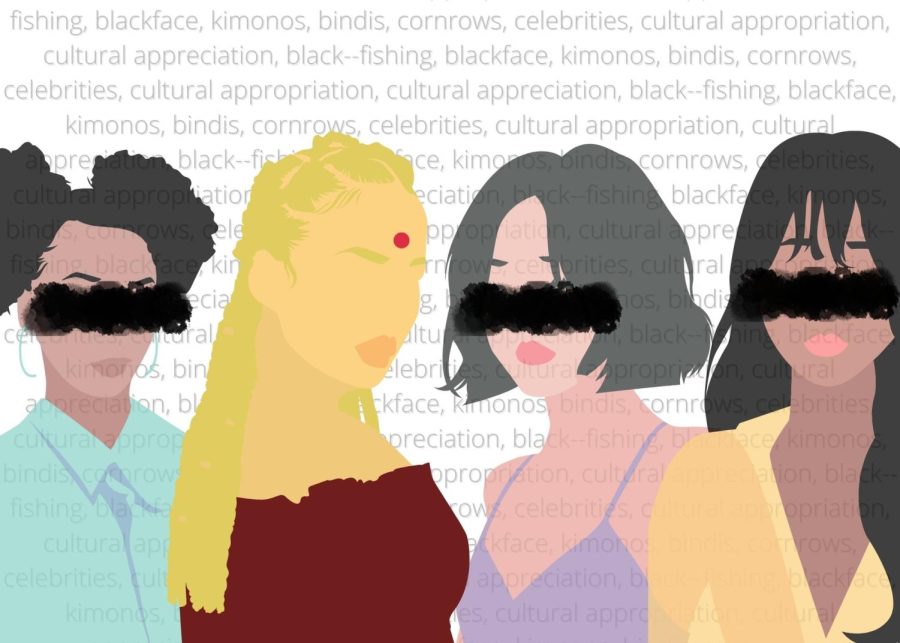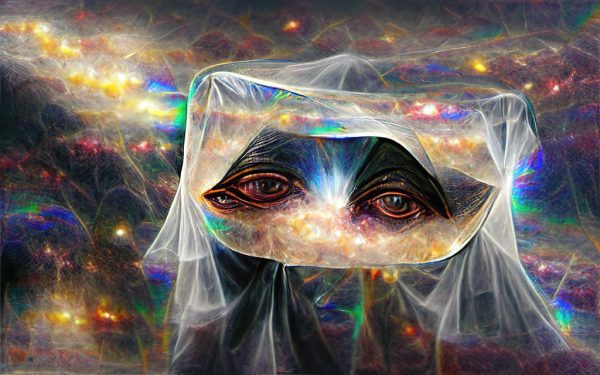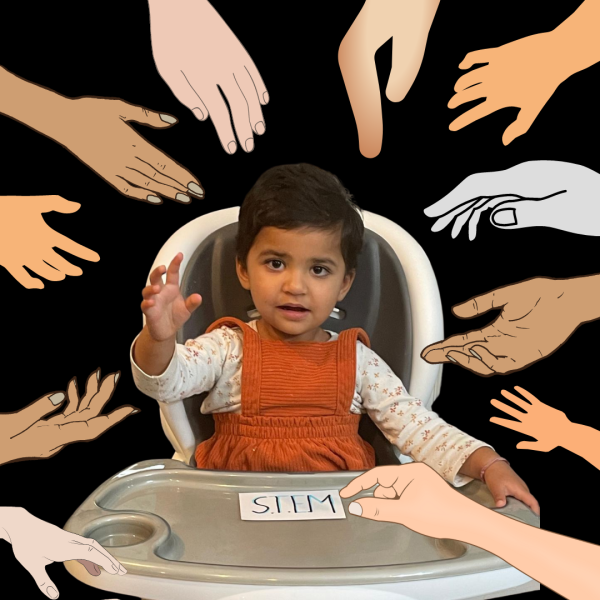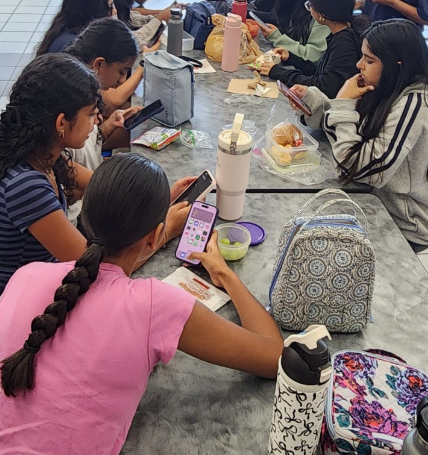Celebrities Don’t “Misunderstand” Culture – They Just Don’t Care
How cultural appropriation is a slippery slope to misrepresentation
Pick and Choose. Several celebrities such as Kim Kardashian, Katy Perry, and Karlie Kloss participate in the act of cultural appropriation. While they feigned ignorance towards the harm caused by these actions, they still caused immense hurt in the respective communities.
When Netflix announced that it would be releasing the documentary Hype House, a five-million-dollar hot mess of entitled TikTok-famous teenagers capitalizing on each others’ clout, I knew that it wouldn’t end well.
The members of the content house had a treasure trove of controversies between them, ranging anywhere from super-spreader parties in the midst of the pandemic to full-blown racism. Although the documentary failed to address the majority of the major issues with the TikTokers, I found myself hoping for a nugget of sanity in Episode 4.
Larray, one of the only influencers of color in the Hype House, sat down to have a heartfelt conversation with Nikita Dragun, a beauty guru of Vietnamese and Mexican descent who is constantly accused of cultural appropriation and blackfishing. Larray tried to explain why Dragun couldn’t keep editing herself to appear as a different race or posing in cornrows, only to get halfhearted nods from the influencer.
While the conversation was extremely surface-level, it got me thinking: is the line between cultural appropriation and cultural appreciation really that thin?
Recently, the discussion around cultural appropriation versus appreciation has entered mainstream discourse, and a lot of nuance and ambiguity has been the result. How much self-tanner is culturally appropriate? What if only certain members of a culture or race are offended? How far can you go with makeup and artistry before it’s offensive?
Throughout her discussion with Larray, Dragun used the concept of cultural ambiguity as her defense, stating that people “would just hate” regardless of how she presented herself online, and therefore ultimately she didn’t know where the line should be drawn. However, this statement displayed the exact issue with the conversation around cultural appropriation: influencers like Dragun would always exploit the gray area.
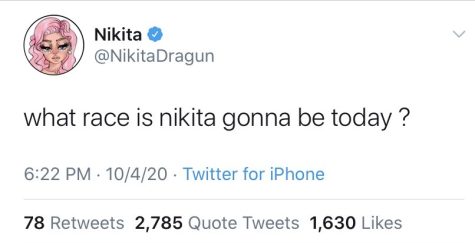
Hear me out: nuance in any topic is a wonderful idea. A great example of this is the argument that all mixing of culture is technically cultural appropriation – however, some types are harmful, and others are not. This point of view stops the categorizing of actions under the stark labels of “appropriation” or “appreciation” and instead focuses on the ramifications of an individual situation.
Another perspective posits that we need to focus on eradicating the forces that make cultural appropriation so prevalent: instead of asking white people to stop wearing henna, we should focus on why a brown person wearing henna receives so much hate in the first place. Another perspective on the issue advocates for teaching people about their respective cultures and heritages rather than policing their interactions with others.
The point is, there are several ways to look at cultural mixing that take different perspectives into account. So, when someone like Dragun – and several other celebrities and influencers of even greater prominence – feigns ignorance, I believe it doesn’t stem from a lack of ability to understand, but rather a lack of effort to understand.
I’m not saying that there is a foolproof way of knowing exactly how a culture will react to something. An infamous example of this is Adele receiving backlash for her choice to wear a Jamaican Flag and a traditional Afro hairstyle at the Notting Hill Carnival; although she didn’t mean to cause harm with her choices, the community was hurt, and she delivered a swift apology. Sometimes, efforts to celebrate a culture can end up causing accidental harm.
However, what influencers like Dragun do is not accidental; rather, it is a blatant disregard for other cultures. They completely change their skin tone in order to “pass” as another race (despite never having to deal with the immense prejudice that comes along with actually being that race), wearing bindis like stickers all over their foreheads at Coachella (despite never studying the history of the ornament nor its cultural significance), and sporting traditional Native American headdresses (despite never looking into the immense struggles that are required to earn said headdresses).
There is no excuse for their behavior in an age where cultural knowledge is accessible at the drop of a hat. These actions are not characterized by wanting to appreciate a culture; rather, they turn the cultures into a trend, an aesthetic, something to take from instead of participate in. Oftentimes, audiences exalt these cultural trends when adorned by their favorite celebrity, but those very same cultural aspects become reasons for ridicule and bullying towards the communities from which they originated.
Celebrities wield such an incredible amount of power in terms of influencing their audience’s style, and when they take from another culture in a mocking, hurtful, or otherwise insensitive manner, they encourage their audience to do so as well. We live in a world where a Kardashian can make a company lose billions of dollars with one tweet. These same Kardashians can then wear cornrows and appropriate Black culture without credit, encouraging their millions of followers to copy. These same Kardashians can try to copyright the word “Kimono” for a shapewear brand, fully aware of the importance of the garment to Japanese culture. Instead of using their power to educate people – and themselves – on these cultures before partaking in them, celebrities cherry-pick aspects they find amusing or profitable.
In addition to influencing their (often young and impressionable) fanbase, a celebrity can send the message to brands and advertisers that cultural ambiguity is the selling point for this generation. Brands such as Louis Vuitton, Yves Saint Laurent, and even H&M intentionally hire models with “racially indeterminate” features, so they can attract audiences of multiple races without alienating their primarily Caucasian consumer base. Because of this new phenomenon, an Indian girl who feels happy to be represented in an advertising campaign may actually just be watching an ethnically ambiguous model who was “reused” to appeal to every race (while still fitting into a Eurocentric beauty standard).
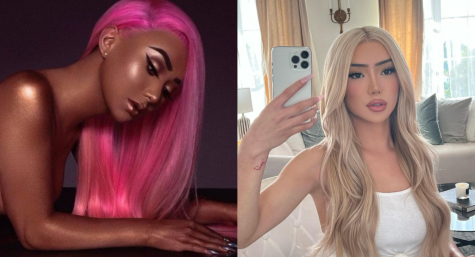
Dragun herself is an example of how celebrities’ cultural – and racial – appropriation tie into this. As a model for Jeffree Star (another Youtuber with a large number of racial controversies) and his new eyeshadow pallete, Dragun’s skin tone in a promotional poster was much darker than her true skin tone, one that could “pass” for Black representation without the influencer actually being Black. The argument that cultural appropriation is just “a fun way to mix cultures and express oneself” falls apart when brands and celebrities use these cultures as a way to profit, elicit outrage for the sake of marketing, and purposefully harm the people who truly belong to those cultures.
As a person of color, a stranger wearing henna isn’t going to bother me. I love my culture, and I’m glad that it is being shared with diverse communities around me. What bothers me is the sentiment that “cultural appropriation doesn’t really exist, right?” from one of my peers because it’s become so commonplace that people find it indistinguishable from appreciation. What bothers me is celebrities treating culture like an all-you-can-eat buffet catering to them rather than a treasure trove of knowledge to foster personal and intellectual growth. And most of all, what bothers me is the ignorance fostered under the guise of innocence when cherry-picking cultures.


